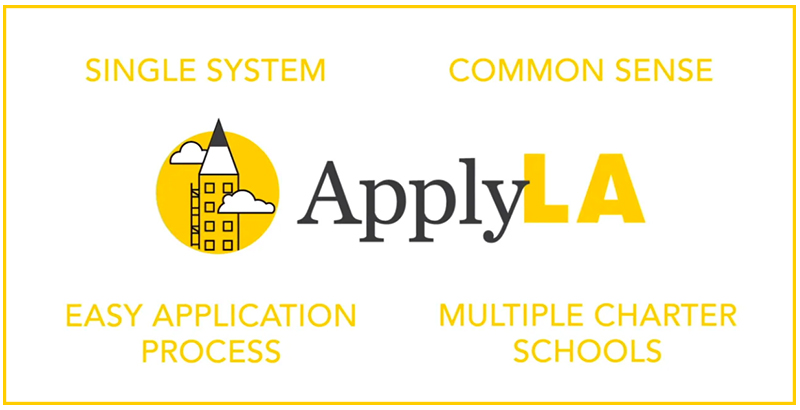ApplyLA: Inside the New Common Application System Launched to Help Los Angeles Parents Research and Enroll in the City’s Independent Charter Schools

This article was produced in partnership with LA School Report
A new website, ApplyLA, debuted Monday, that allows parents for the first time to apply to multiple independent charter schools in Los Angeles with a single application.
Parents will be able to manage application deadlines, see the status of their applications, and accept offers in a single system. The platform is mobile-friendly and available in English, Spanish, and Korean.
About 10 percent of the city’s charter schools volunteered to be part of the first year’s pilot program. The site has 31 schools, and more are expected to join after this year. Applications are now available for the 2019-20 school year. If a school receives more applications than it has seats for, lotteries will be held, most commonly in early spring.
There are now two online systems for families to find and apply to public schools in Los Angeles. L.A. Unified launched its own unified enrollment site last year, and last month it added a school finder that allows parents to compare up to three district schools. Independent charters are not included in that system but may be added in the future.
Here are the charter schools that are participating in the new application system.
“We absolutely think that one platform would have been the simplest and the right solution for families. However, this is a situation where the district first and deliberately excluded independent charter schools from their platform. And so, what we’re doing is we’re trying to address the sort of incomplete solution that we have in L.A.,” said Lauren Tate, director of school growth at Great Public Schools Now, an L.A.-based education nonprofit that headed up the development of the new website along with Parent Revolution, an advocacy organization that also collaborated in the development of the L.A. Unified system.
“We’re trying to align charter enrollment processes, so that at the minimum we have families who can have two systems instead of hundreds of different systems,” she said.
Tate said it’s possible to merge the two systems, but it would probably take some years.
“There’s not a technical reason why there can’t just be one solution for families. And I think there are political barriers that probably mean that we’re a couple of years off.”
Because every charter is independently and individually authorized by L.A. Unified, the schools cannot change to a common deadline for applications without amending their charters, not even among schools managed by the same charter operator. So the charter schools on the new site still have different deadlines for applications, lotteries, and acceptance dates.
To change that, the district would have to revise its policy for charters’ petitions so a common timeline could be set for every charter that is authorized by the district.
“We probably will need some kind of board resolution in order to make it possible for charters to participate and easily amend their charter petitions to do so,” Tate said. “When you are talking about 250 schools, obviously that solution [individual petition amendments] is not a very promising one.”
Last year, Houston launched a common application that allows families to apply to five charter school networks using a single online form. Denver, Indianapolis, and New Orleans also use common applications, and research suggests that simplifying the process in Denver increased the numbers of English language learners and students of color in its charter schools.
The developers of the new L.A. charter site studied some of those cities, as well as Oakland, Tate said.
A unified enrollment system represents “a real step forward” for a public school district, said David Osborne, director of Reinventing America’s Schools at the Progressive Policy Institute, who has written about unified enrollment systems in these cities in his book Reinventing America’s Schools. “It helps enormously, because it simplifies the process, it simplifies their lives. It also creates a much more equitable system for all families.
“Educated parents who have the time have a tremendous advantage in getting their kids into the best schools. They know how to bake brownies for the principal and get to know the principal. They know other ways to circumvent the rules and get their child into a good school. Then there are other parents who don’t know those ways. They don’t speak English, they may be working two jobs and will not be able to spend that time.
“A common enrollment system tends to level the playing field and get more equal opportunity to all families.”
Help fund stories like this. Donate now!

;)
